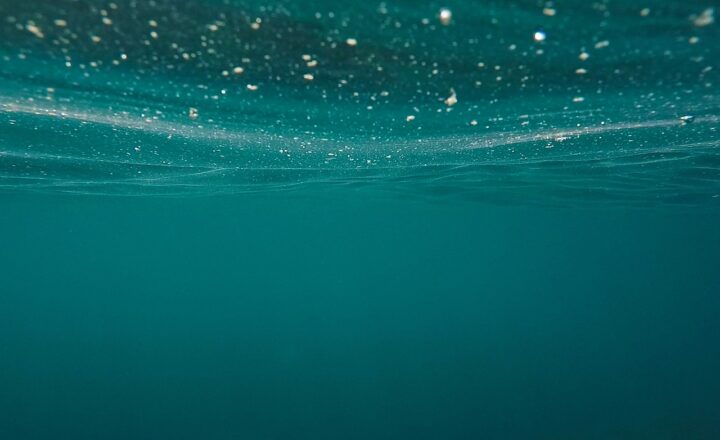The Most Intriguing Mysteries About Ancient Underwater Ruins
November 17, 2024

Throughout history, civilizations have risen and fallen, leaving behind profound mysteries and fascinating tales. Among these are the ancient underwater ruins that spark curiosity and imagination. These submerged places provide us with insight into ancient cultures, lost technologies, and the impact of climate change. Discovering their allure, researchers and explorers dive into the depths of oceans and lakes to unravel the stories that lie beneath the surface.
1. The Enigmatic Submerged City of Atlantis
One of the most enduring legends of ancient history is that of Atlantis, a fabled city said to have existed over 11,000 years ago. Described by the philosopher Plato, Atlantis was said to have been an advanced civilization that was ultimately swallowed by the sea in a catastrophic event. Although many consider Atlantis a myth, explorers have sought its location in the depths of the Atlantic Ocean, the Mediterranean Sea, and even Antarctica.
Some researchers believe that the story might be rooted in real events, perhaps reflecting the Thera eruption, which devastated the Minoan civilization on the island of Santorini. This catastrophic event left ruins that are remarkably well-preserved, providing clues that could be part of the Atlantis narrative.
The search for Atlantis continues to inspire expeditions, and while it remains elusive, its mystique captivates the imaginations of many.
2. The Mysterious Yonaguni Monument
Located off the coast of Yonaguni, Japan, the Yonaguni Monument is a massive underwater structure that has distinguished itself as one of the most debated archaeological sites in the world. Discovered in 1985, this submerged platform features stairs, terraces, and paths that some claim are evidence of an ancient civilization that thrived in the region.
Critics argue that the monument’s features are merely natural formations, but proponents point to the precision of the carvings as evidence of human craftsmanship. Multiple expeditions have attempted to investigate the monument’s purpose and origins, sparking debates among archaeologists, geologists, and enthusiasts.
Regardless of its origins, the Yonaguni Monument stands as a testament to humanity’s ongoing struggle to understand the past.
3. The Lost City of Dwarka
According to ancient texts, Dwarka was a prosperous city built by Lord Krishna, reputedly located off the western coast of India. The city is said to have vanished beneath the sea after a cataclysmic event. In the 1980s, marine archeologists discovered what appeared to be an ancient city submerged near the modern-day city of Dwarka.
Underwater excavations revealed structures resembling dwelling places, roads, and fortifications, raising the question of whether this could indeed be the legendary city described in Hindu mythology. Radiocarbon dating of the artifacts indicates they date back to around 3000 BCE, a time when civilization was flourishing in the Indian subcontinent.
The ongoing studies at Dwarka may yet uncover more secrets from one of the oldest known civilizations.
4. The Sunken Ruins of Baiae
In ancient Rome, Baiae was renowned for its luxurious lifestyle, featuring spas and villas coveted by the elite. Located near Naples, this retreat was the center of indulgence and excess. Today, much of Baiae lies submerged, a result of volcanic activity and land subsidence.
Underwater archaeological investigations have uncovered ruins of opulent villas, pools, and intricate mosaics that reflect the grandeur of Roman architectural sophistication. The underwater park attracts divers and historians alike, eager to muse over the artifacts left behind.
Exploring Baiae offers a glimpse into the lifestyle of Roman aristocrats, who sought pleasure and relaxation in a land that was once above water.
5. The Ruins of Antikythera: An Ancient Computer
In 1901, divers off the coast of Antikythera, a Greek island, uncovered a shipwreck containing an artifact that became known as the Antikythera Mechanism. Once thought to be merely a collection of artefacts, research uncovered that it was, in fact, a complex ancient device used for astronomical calculations.
This instrument, dating back to around 150 BCE, is believed to be a precursor to mechanical computers, highlighting the advanced understanding of mechanics and the cosmos possessed by the ancient Greeks. The discovery has raised intriguing questions about the level of scientific knowledge and technological sophistication in ancient civilizations long before the Renaissance.
The Antikythera Mechanism remains a remarkable testament to ancient ingenuity and an artifact that continues to intrigue researchers.
6. The Underwater Ruins of the Etruscan City of Cosa
Near the coast of Tuscany, the submerged ruins of the Etruscan city Cosa are believed to have stood on a prominent hill overlooking the Tyrrhenian Sea. Founded in the 3rd century BCE, this city was once a vibrant trading hub.
The ruins were discovered in 1950, with excavations revealing the remains of temples, homes, and fortifications where the Etruscans engaged in commerce and culture. As the sea level rose due to climate change and tectonic activity, the city became submerged, leaving behind remnants that tell the story of its faded glory.
Researchers continue to explore these underwater ruins, piecing together the ways of life of the Etruscan civilization that thrived until the Roman conquest.
Conclusion
The allure of ancient underwater ruins transcends mere historical inquiry. They represent lost civilizations, the mysteries of the past, and the wonders of scientific discovery. As ocean technology improves, it is possible that many more submerged ruins will be discovered, leading to new insights into humanity’s ancestral journey. Each site invites us to explore, unravel, and understand the stories that have shaped our world.
Diving into these submerged mysteries not only fascinates historians and archaeologists but also connects us to our shared cultural heritage, reminding us that beneath the waves lies a treasure trove of knowledge waiting to be uncovered.








